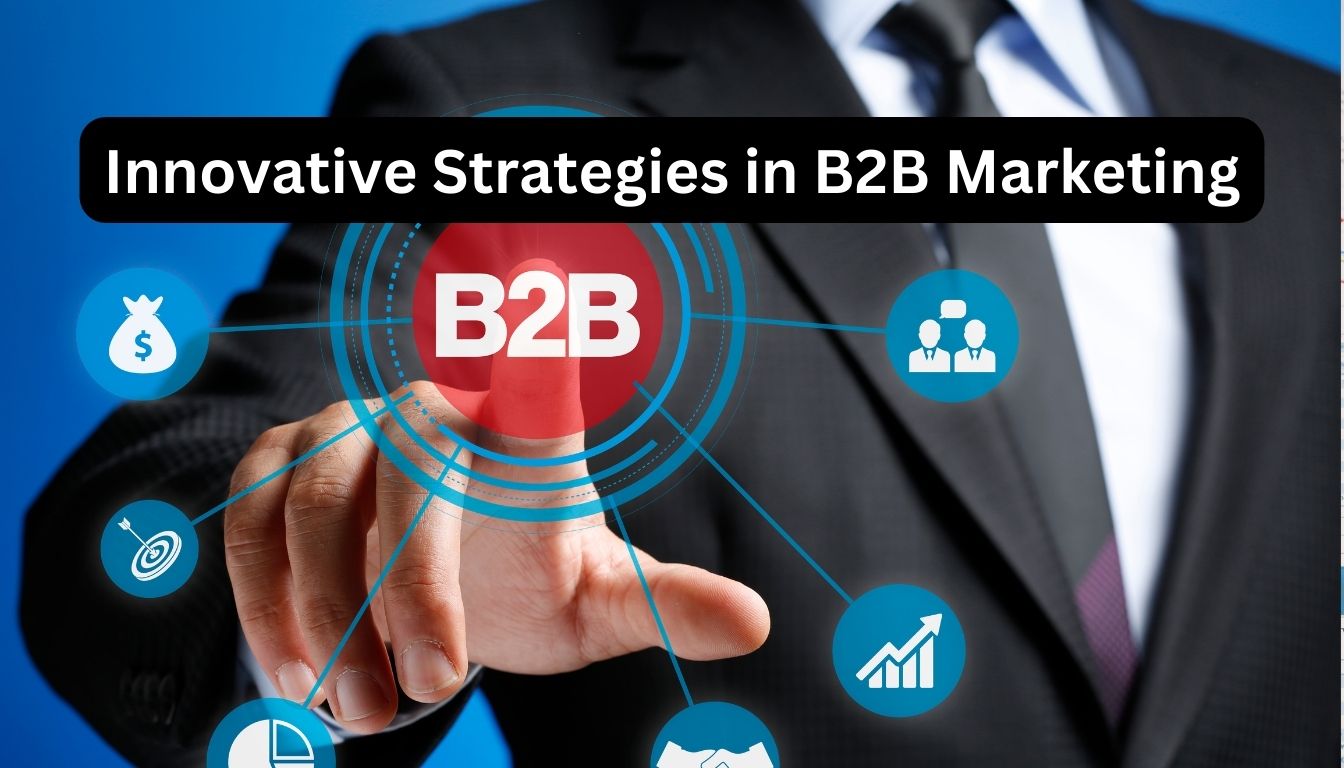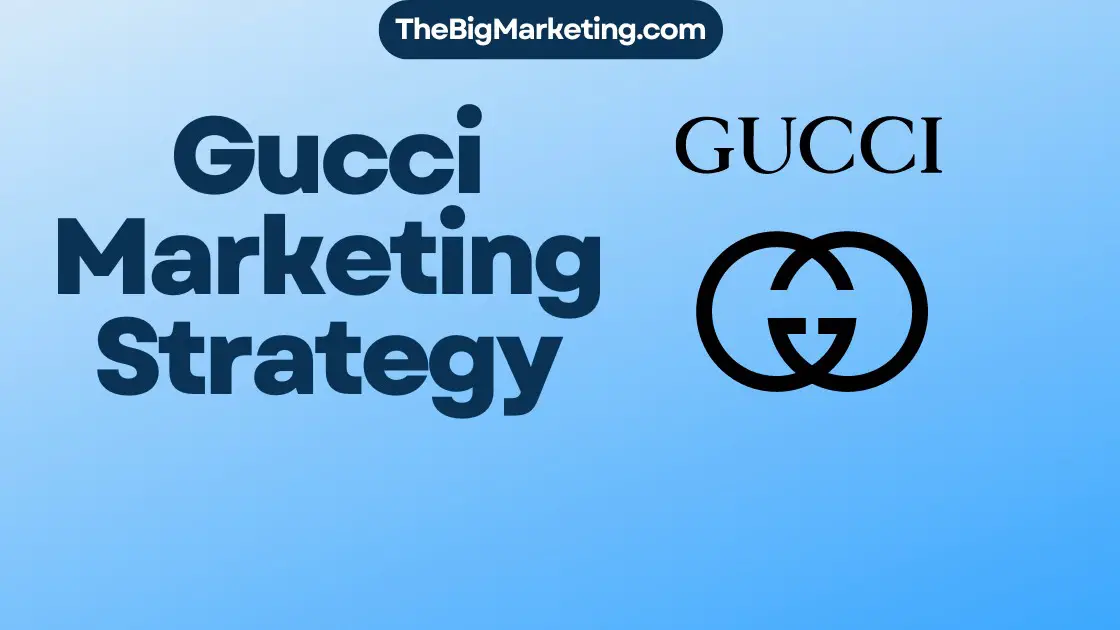The world of internet marketing has seen significant growth in the past 15 years, with the rise of native advertising and content marketing. While these terms are often used interchangeably, they have distinct meanings and capabilities. Native advertising refers to the seamless placement of valuable information within a website, while content marketing is a broader practice that focuses on distributing valuable knowledge to a specialized target audience. Understanding the difference between these two strategies is crucial for effective internet marketing planning.
Key Takeaways:
- Native advertising involves the seamless integration of targeted ads into a website’s content.
- Content marketing focuses on distributing valuable knowledge to a specialized target audience.
- Native advertising attracts a targeted audience and leads to higher engagement.
- Content marketing builds credibility, drives traffic, and generates sales.
- When used together, native advertising and content marketing can effectively reach and engage a target audience.
What is Native Advertising?
Native advertising is a form of online marketing that involves seamlessly integrating ads into the content of a website. These ads provide valuable and targeted information to a specific demographic, ensuring a more personalized and relevant user experience. Native ads can be found on popular platforms like BuzzFeed, where they are labeled as “ad” or “sponsored content.” The use of native advertising platforms such as Taboola, Outbrain, and Yahoo Gemini has been steadily growing, showcasing its effectiveness in reaching and engaging users in the digital landscape.
Benefits of Native Advertising:
- Seamless integration: Native ads blend harmoniously with the website’s content, providing a non-disruptive user experience.
- Targeted information: Native advertising allows businesses to deliver specific and relevant information to their desired audience segments.
- Sponsored content: Native ads are clearly identified as sponsored content, ensuring transparency and trust.
What is Content Marketing?
Content marketing is an essential advertising strategy that focuses on delivering valuable knowledge to a target audience while building brand awareness. Unlike native advertising, content marketing is a long-term approach that utilizes various content assets, such as videos, guides, newsletters, and blogs.
Through content marketing, businesses create and share valuable content that is owned by them. This content helps nurture leads and engage with the audience as part of a comprehensive marketing campaign. The ultimate goal of content marketing is to establish trust, build credibility, and guide potential customers towards conversion.
To ensure effective content marketing, businesses need to develop a segmented strategy that caters to different stages of the buyer’s journey. This involves dividing content into top, middle, and bottom funnel strategies, targeting users at various stages of the decision-making process.
Content marketing offers several advantages over other advertising strategies. By providing valuable knowledge, businesses can position themselves as industry experts and thought leaders, enhancing their brand reputation. Moreover, content marketing creates long-term brand awareness and serves as a valuable asset that can be repurposed and shared across multiple channels.
Benefits of Content Marketing:
1. Increased brand awareness: By consistently delivering valuable content, businesses can increase their visibility and reach a wider audience.
2. Establishing credibility and trust: Valuable content helps build credibility and trust with the target audience, increasing the likelihood of conversion.
3. Expanded audience reach: With content marketing, businesses have the opportunity to reach new audiences and expand their customer base.
4. Nurture leads and guide customers: Content marketing enables businesses to nurture leads by providing valuable information at different stages of the buyer’s journey.
5. Repurpose and share content: Content assets created through content marketing can be repurposed and shared across multiple platforms, maximizing their impact and reach.
Content Marketing Strategy
To create an effective content marketing strategy, businesses should consider the following:
- Defining target audience personas.
- Identifying key content topics and formats.
- Developing a content calendar.
- Creating high-quality and valuable content.
- Optimizing content for search engines.
- Promoting content through various channels.
- Tracking and analyzing content performance.
| Content Marketing Strategy Components | Description |
|---|---|
| Target Audience Personas | Identify and develop profiles of the target audience to tailor content accordingly. |
| Key Content Topics and Formats | Determine the main subjects and formats to address the target audience’s needs and preferences. |
| Content Calendar | Create a schedule to consistently produce and distribute content in a strategic manner. |
| High-Quality Content Creation | Produce valuable, well-researched, and engaging content that aligns with the target audience’s interests. |
| Search Engine Optimization | Optimize content with relevant keywords and meta tags to improve visibility on search engines. |
| Promotion Across Channels | Share content across various channels, including social media, email marketing, and industry-specific platforms. |
| Performance Tracking and Analysis | Measure the effectiveness of content marketing efforts and make data-driven decisions for future strategies. |
A well-executed content marketing strategy can drive organic traffic, engage the audience, and ultimately contribute to the achievement of long-term marketing goals.
Benefits of Native Advertising
Native advertising offers several benefits to businesses looking to reach their target audience more effectively. Through seamless integration, targeted placement, and increased trust, native advertising provides a unique approach to online advertising. Let’s explore the key benefits:
1. Seamless Integration
One of the primary advantages of native advertising is its ability to seamlessly integrate ads into websites and platforms. Unlike traditional banner ads that can be disruptive, native ads blend in naturally with the surrounding content, offering a more cohesive user experience. This seamless integration ensures that ads are presented in a non-intrusive manner, catching the attention of the audience without interrupting their browsing or reading flow.
2. Targeted Audience
Native advertising allows businesses to target specific demographics or segments of their audience with precision. By strategically placing relevant ads on websites or platforms that align with their target audience’s interests and preferences, businesses can increase the visibility and relevance of their ads. This targeted approach ensures that ads are seen by the right people at the right time, maximizing their effectiveness in generating engagement and conversions.
3. Higher Click-Through Rates (CTR)
The seamless integration and targeted placement of native ads contribute to higher click-through rates (CTR) compared to traditional display ads. When ads seamlessly blend with the content, users are more likely to engage and interact with them. By enticing users with valuable information that aligns with their interests, native ads are more successful in driving clicks and conversions.
4. Trust and Engagement
Native advertisements often garner more trust from users compared to traditional ads. Users perceive native ads as valuable and informative content rather than blatant promotional messages. This trust leads to increased engagement, as users are more likely to interact with ads they perceive as valuable and relevant. By building trust and engagement, businesses can establish a positive brand image and nurture customer relationships.
5. Resistant to Ad Blockers
Another advantage of native advertising is its resistance to ad blockers. As native ads are seamlessly integrated within the content, they are less likely to be detected and blocked by ad-blocking software. This allows businesses to reach a wider audience and ensures that their ads are not hindered by ad-blocking technology.
6. Multiple Platforms
Native advertising can be utilized across multiple platforms, including mainstream publications, social media networks, and native advertising networks. This versatility allows businesses to reach their target audience across various channels and increase the visibility of their ads. Whether targeting a specific niche on a specialized platform or reaching a broader audience through mainstream publications, native advertising provides flexibility and reach.
Incorporating native advertising into your marketing strategy can provide numerous benefits, such as increased engagement, higher click-through rates, and seamless integration. By leveraging the power of native advertising, businesses can effectively connect with their target audience and achieve their marketing goals.
| Benefits | Description |
|---|---|
| Seamless Integration | Native ads blend seamlessly with website content, providing a non-disruptive user experience. |
| Targeted Audience | By strategically placing ads, businesses can reach a specific demographic or audience segment. |
| Higher CTR | Native ads generate higher click-through rates due to their relevance and seamless integration. |
| Trust and Engagement | Native ads build trust with users, leading to increased engagement and interaction. |
| Resistant to Ad Blockers | Native ads are less likely to be blocked by ad-blocking software. |
| Multiple Platforms | Native advertising can be utilized on various platforms, expanding reach and visibility. |
Benefits of Content Marketing
Content marketing is a powerful strategy that offers various benefits to businesses. By leveraging valuable content, businesses can drive traffic, increase engagement, and generate sales. Let’s explore the key advantages of content marketing:
1. Driving Traffic
One of the primary benefits of content marketing is its ability to drive traffic to a website or other digital platforms. By consistently creating and sharing valuable content such as blog posts, videos, and infographics, businesses can attract organic traffic from search engines and social media channels. This increased traffic not only boosts online visibility but also opens up opportunities for lead generation and conversions.
2. Increasing Engagement
Content marketing plays a crucial role in capturing and maintaining the attention of the target audience. By delivering relevant and valuable content, businesses can keep users engaged and encourage them to interact with the brand. Engagement can take various forms, including comments, social media shares, likes, and subscriptions. Higher engagement levels indicate a strong connection between the brand and its audience, fostering brand loyalty and advocacy.
3. Generating Sales
Effective content marketing can directly impact a company’s sales and revenue. By creating content that addresses the pain points, challenges, and needs of the target audience, businesses can position themselves as a trusted authority in the industry. This credibility boosts customer confidence, leading to increased trust and a higher likelihood of making purchasing decisions. Research shows that businesses that engage in content marketing experience higher conversion rates compared to those who don’t.
4. Building Credibility
Content marketing allows businesses to showcase their expertise and knowledge in a particular industry or niche. By consistently providing valuable content that helps solve problems or offers insights, businesses can establish themselves as thought leaders and build credibility with their target audience. When customers perceive a brand as credible and trustworthy, they are more likely to choose that brand over competitors and become long-term customers.
5. Guiding the Buyer’s Journey
Content marketing plays a significant role in guiding customers through the buyer’s journey, from the initial discovery stage to the final purchasing decision. By creating content that addresses each stage of the buyer’s journey (awareness, consideration, decision), businesses can nurture leads, educate prospects, and influence their decision-making process. Well-crafted content can draw customers in, provide the information they need, and ultimately convince them to choose the brand.
6. Influencing Purchasing Decisions
Research shows that a significant percentage of consumers rely on a brand’s content when making purchasing decisions. Content that offers valuable information and addresses customer pain points is more likely to influence buying decisions. By delivering compelling content that resonates with the target audience, businesses can position themselves as the go-to solution provider, driving sales and fostering customer loyalty.
| Benefits | Description |
|---|---|
| Driving Traffic | Creating and sharing valuable content attracts organic traffic and boosts online visibility. |
| Increasing Engagement | Delivering relevant content keeps users engaged and fosters brand loyalty. |
| Generating Sales | Content that addresses customer needs and builds trust leads to higher conversion rates. |
| Building Credibility | Consistently providing valuable content establishes the brand as a thought leader. |
| Guiding the Buyer’s Journey | Content tailored to each stage of the buyer’s journey nurtures leads and influences decisions |
| Influencing Purchasing Decisions | Compelling content that addresses customer pain points and offers solutions drives sales. |
Similarities between Native Advertising and Content Marketing
Native advertising and content marketing share common goals and strategies, making them highly complementary in the realm of online advertising. While they differ in their approach and focus, both strategies aim to distribute valuable content, build trust with the audience, and enhance engagement. Let’s explore the key similarities between native advertising and content marketing:
1. Content Distribution
Both native advertising and content marketing involve the distribution of valuable information to reach a target audience effectively. Native advertising achieves this by seamlessly integrating sponsored content into websites, while content marketing distributes valuable knowledge through various owned media platforms.
2. Building Trust
Native advertising and content marketing prioritize building trust with the audience. By delivering valuable and relevant content, both strategies aim to establish credibility and nurture long-term relationships with their target audience.
3. Engagement
Engagement is a key objective for both native advertising and content marketing. Native advertising focuses on immediate response and capturing the attention of the audience through seamless ad placement. Content marketing takes a more long-term approach, attracting and engaging the audience with valuable content at different stages of the buyer’s journey.
4. Target Audience
Both strategies revolve around understanding and catering to a specific target audience. Native advertising and content marketing work best when tailored to the preferences, interests, and needs of the intended audience.
When used together, native advertising can effectively drive traffic to content marketing platforms, contributing to a stronger return on investment (ROI). Native ads can serve as a gateway to lead the audience to valuable content assets produced through content marketing strategies.
Ultimately, a well-crafted advertising strategy combines the strengths of native advertising and content marketing, leveraging their shared objectives to engage the target audience, build trust, and maximize the impact of the overall marketing efforts.
Native Advertising vs. Content Marketing Use Cases
Native advertising and content marketing are two powerful strategies that can be used to reach and engage a target audience. While they have distinct approaches and goals, they can complement each other when used strategically. Let’s explore the use cases and benefits of each.
Native Advertising
Native advertising is a form of online advertising that seamlessly integrates promotional content within a website. It aims to appeal to a specific audience and prompt immediate action. Here are some use cases for native advertising:
- Targeted Audience: Native advertising allows you to reach a highly targeted audience based on demographics, interests, and behavior.
- Conversions: By delivering relevant content to the right audience, native ads can drive conversions and prompt users to take desired actions.
- Immediate Response: Native ads are designed to capture attention and generate immediate engagement, making them effective for time-sensitive campaigns.
Here’s an example of a native advertising use case:

| Platform | Target Audience | Goal |
|---|---|---|
| Mainstream Publication | Health-conscious readers | Promote a new organic skincare product |
| Native Advertising Network | Pet owners | Drive traffic to a pet food brand’s website |
Content Marketing
Content marketing takes a long-term approach to attract and engage a target audience. It focuses on creating valuable and relevant content that moves users through the buyer’s journey. Here are some use cases for content marketing:
- Long-term Engagement: Content marketing aims to build an ongoing relationship with the audience, nurturing them over time and building trust.
- Website Traffic: By consistently producing high-quality content, content marketing can drive organic traffic to your website and increase visibility.
- Conversions: Through valuable content, content marketing can guide users through the sales funnel, increasing the likelihood of conversions.
Here’s an example of a content marketing use case:

| Content Asset | Target Audience | Goal |
|---|---|---|
| Blog | Small business owners | Position the brand as a thought leader in entrepreneurship |
| Video Tutorial | Aspiring chefs | Showcase the brand’s culinary expertise and promote cooking products |
In summary, native advertising and content marketing serve different purposes and can be applied to different stages of a marketing campaign. Native advertising is effective for reaching targeted audiences and driving immediate action, while content marketing focuses on a long-term approach to build an audience and drive conversions. When used together, these strategies can amplify your marketing efforts and maximize engagement with your target audience.
Owned Media vs. Paid Media
Understanding the difference between owned media and paid media is crucial in distinguishing the roles of native advertising and content marketing.
Owned media refers to platforms where a company has complete control over content creation and distribution. This includes websites and social media pages that are owned and operated by the business. Content marketing, a subset of owned media, focuses on building an audience on these platforms by creating valuable and engaging content.
On the other hand, paid media is the utilization of third-party platforms to reach existing audiences. Native advertising is a form of paid media that leverages these platforms to deliver sponsored content seamlessly to users.
By combining both native advertising and content marketing, brands can enjoy the benefits of both owned and paid media. Content marketing helps build an established audience on owned platforms, while native advertising extends reach to new audiences on external platforms.
The Difference Between Owned Media and Paid Media
Owned Media:
- Complete control over content creation and distribution
- Includes company-owned platforms like websites and social media pages
- Allows for content management system and distribution control
- Falls under the umbrella of content marketing strategies
- Targets and nurtures an established audience
Paid Media:
- Utilizes third-party platforms to reach audiences
- Includes platforms like mainstream publications, social media networks, and native advertising networks
- Leverages existing audiences on these platforms
- Supports inbound marketing efforts
- Expands reach to a wider audience outside of owned platforms
Table: Owned Media vs. Paid Media
| Owned Media | Paid Media |
|---|---|
| Complete control over content creation and distribution | Utilizes third-party platforms to reach audiences |
| Includes company-owned platforms like websites and social media pages | Includes platforms like mainstream publications, social media networks, and native advertising networks |
| Allows for content management system and distribution control | Leverages existing audiences on these platforms |
| Falls under the umbrella of content marketing strategies | Supports inbound marketing efforts |
| Targets and nurtures an established audience | Expands reach to a wider audience outside of owned platforms |
New Opportunities with Native Advertising
Native advertising provides new opportunities for brands to reach a wider audience with relevant content. By seamlessly integrating sponsored content within mainstream publications, media publishers, social media platforms, and native advertising networks, brands can effectively deliver their message to the target audience.
To make the most of these opportunities, it is crucial to provide valuable information that is tailored to the interests and needs of the target audience. This means creating high-quality content that not only engages but also adds value to the readers’ experiences.
Working with media agencies that specialize in native advertising can greatly enhance the chances of success. These agencies have the expertise and knowledge to effectively pitch the brand’s content to the right audience, ensuring maximum visibility and engagement.
With the increasing popularity of native advertising, brands now have more avenues to showcase their content. Whether it’s through sponsored articles in mainstream publications, native ads on social media platforms, or collaborations with native advertising networks, the possibilities are vast.
By capitalizing on these new opportunities, brands can expand their reach, increase brand awareness, and drive meaningful engagement. Native advertising allows them to deliver their message in a way that feels natural and relevant, creating a seamless user experience that resonates with the target audience.
Next, let’s dive into the different native advertising and social media platforms that offer a range of options for brands to leverage this powerful marketing strategy.
Native Advertising Opportunities
| Platform | Target Audience | Main Features |
|---|---|---|
| Mainstream Publications | Wide audience base | Established reputation, diverse content formats |
| Media Publishers | Niche-specific audience | Expert content, targeted reach |
| Social Media Platforms | Varying demographics | Seamless integration, vast user base |
| Native Advertising Networks | Targeted audience segmentation | Efficient ad distribution, advanced targeting options |
Native Advertising and Social Media Networks
Social media networks present valuable opportunities for businesses to utilize native advertising through sponsored ad programs. Native ads seamlessly integrate with users’ newsfeeds, offering a more natural and non-intrusive form of advertising. Social media platforms employ algorithms that facilitate targeted audience reach, making it easier for advertisers to connect with their desired demographics. By creating high-quality native content, businesses can leverage the potential for user and inter-business sharing, leading to audience growth and enhanced online credibility. Native advertising on social media acts as a complementary strategy to content marketing, effectively driving engagement and boosting sales.
Benefits of Native Advertising on Social Media Networks:
- Seamless integration with users’ newsfeeds
- Natural and non-intrusive form of advertising
- Targeted audience reach through platform algorithms
- Potential for user and inter-business sharing
- Audience growth and increased online credibility
- Complements content marketing strategies for enhanced engagement and sales
Example Native Advertising Opportunities on Social Media Networks:
| Social Media Network | Sponsored Ad Program | Benefits |
|---|---|---|
| Facebook Ads | Reach a wide range of target demographics; precise audience targeting options | |
| Instagram Sponsored Content | Access to an engaged user base; visually appealing ad formats | |
| Twitter Promoted Tweets | Real-time audience engagement; trending topics and hashtags |
By strategically leveraging native advertising on social media networks, businesses can effectively connect with their targeted audience, drive engagement, and grow their online presence.
Conclusion
In conclusion, understanding the difference between content marketing and native advertising is crucial for effective engagement and planning in the realm of online advertising. While native advertising focuses on seamless ad placement and immediate response, content marketing takes a more comprehensive and long-term approach.
By leveraging the strengths of both native advertising and content marketing, businesses can develop effective online advertising strategies and achieve their marketing goals. Native advertising can attract a targeted audience and prompt immediate action, while content marketing builds credibility, drives traffic, and generates sales over time.
By incorporating both strategies into their marketing planning, businesses have the opportunity to increase traffic, engagement, and conversions. It is important to recognize that effective engagement in the online advertising landscape requires a combination of native advertising and content marketing strategies tailored to the specific needs and objectives of the target audience.
FAQ
What is the difference between native advertising and content marketing?
Native advertising involves seamless ad placement within a website’s content, while content marketing focuses on distributing valuable knowledge to a target audience.
What is native advertising?
Native advertising refers to the seamless placement of valuable information within a website, providing targeted information to a specific demographic without disrupting the user experience.
What is content marketing?
Content marketing is a comprehensive advertising strategy that aims to provide valuable knowledge to a target audience while raising brand awareness.
What are the benefits of native advertising?
Native advertising offers benefits such as attracting the attention of a targeted audience, higher click-through rates, increased engagement, wider visibility, and the ability to use multiple platforms.
What are the benefits of content marketing?
Content marketing provides benefits such as driving traffic, increasing engagement, generating sales, building credibility, guiding customers through the buyer’s journey, and influencing purchasing decisions.
What are the similarities between native advertising and content marketing?
Native advertising and content marketing share similarities in terms of content distribution, building trust with the audience, and increasing engagement.
How can native advertising and content marketing be used together?
Native advertising can drive traffic to content marketing platforms, contributing to a stronger return on investment (ROI) by enhancing engagement and increasing the chance of conversions.
What is the difference between owned media and paid media?
Owned media refers to platforms where a company has complete control over content creation and distribution, while native advertising utilizes paid media and leverages existing audiences on third-party platforms.
What new opportunities does native advertising provide?
Native advertising provides opportunities to reach a wider audience with relevant content through mainstream publications, media publishers, social media platforms, and native advertising networks.
How can native advertising be used on social media networks?
Native advertising on social media blends seamlessly into users’ newsfeeds, resulting in a more natural and non-intrusive form of advertising, enhancing engagement and potentially leading to audience growth and increased credibility.







